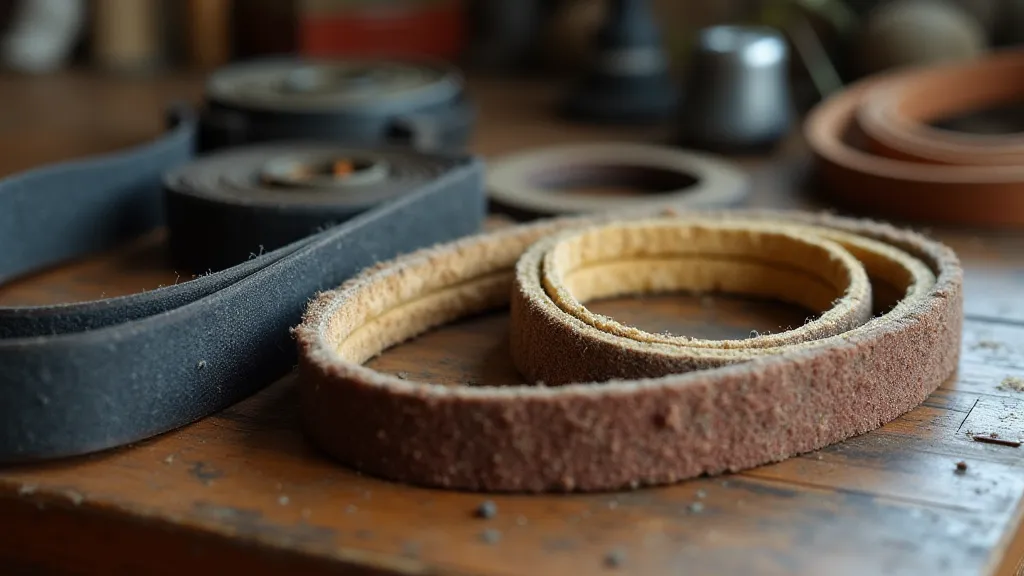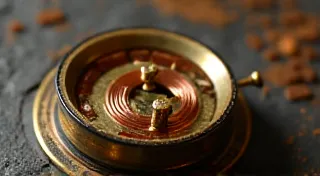Understanding and Replacing Drive Belts in Antique Record Players
One of the most common maintenance tasks for antique phonographs and record players is drive belt replacement. Over time, these belts degrade, stretch, become brittle, or simply break, leading to slow speeds, skipping records, or a complete cessation of playback. This guide will walk you through identifying, sourcing, and replacing drive belts in your vintage audio equipment.
Why Drive Belts Need Replacing
Drive belts, typically made of rubber or felt, connect the motor to the turntable or driving mechanism. They transfer the motor’s rotational force to spin the record. Factors leading to belt degradation include:
Age: Rubber deteriorates naturally over time, becoming brittle and prone to cracking.
Environmental Factors: Exposure to heat, sunlight, and ozone can accelerate belt breakdown.
Stretching: Repeated use can cause belts to stretch, leading to slower playback speeds. This is a critical factor in maintaining the correct speed, and is often intertwined with the overall speed regulation system of the machine; for a deeper understanding, you may find the article Understanding the Speed Regulation System in Antique Phonographs helpful.
Chemical Exposure: Contact with oils, lubricants, or cleaning agents can damage the belt material.
Identifying Your Drive Belt Type
Not all antique phonographs use the same type of drive belt. Common types include:
Rubber Belts: These are the most common type, often found in later vintage record players.
Felt Belts: These were prevalent in earlier models, particularly those from the 1920s and 1930s. Felt belts often require more careful handling. The materials and construction of these early machines can be incredibly complex, with many parts needing careful attention and sometimes specialized care.
String Belts: Less common, but occasionally found in older mechanisms. These are delicate and require precise alignment.
The belt’s dimensions (length and width) are critical for proper replacement. Carefully measure the old belt, or consult your phonograph’s service manual, if available.

Sourcing Replacement Drive Belts
Finding replacement drive belts can be challenging. Here are some avenues to explore:
Specialty Online Retailers: Several online retailers specialize in replacement parts for vintage audio equipment. These are often the most reliable source for correctly sized belts.
eBay: You may find original or reproduction belts listed on eBay. Be sure to carefully review the seller’s feedback and product description.
Record Player Repair Shops: Some repair shops stock common drive belts or can source them for you.
Manufacturing Belts: If all else fails, you may have to locate a specialist company that can manufacture a drive belt based on dimensions. Often, the intricate designs of older phonographs mean finding the right replacement isn't as simple as ordering something off the shelf – sometimes specialized fabrication is required.
The Replacement Process – A Step-by-Step Guide
Safety First: Disconnect the phonograph from the power outlet before beginning any repairs.
Accessing the Belt: This step varies significantly depending on the model. Consult your service manual or online resources for specific instructions. Generally, you're looking to remove a cover or panel that exposes the motor and turntable mechanism.
Removing the Old Belt: Carefully work the belt off the motor pulley and the turntable drive wheel. Felt belts can be particularly prone to tearing, so be gentle. These early belts often left a residue on the pulleys, requiring careful cleaning to ensure proper adhesion of the new belt.
Cleaning the Pulleys: Before installing the new belt, clean the motor pulley and the turntable drive wheel with a mild solvent (isopropyl alcohol is often suitable). This removes old rubber residue and ensures proper belt adhesion. The condition of these pulleys – any wear, chipping, or residue – can significantly impact playback quality.
Installing the New Belt: Carefully position the new belt onto the pulleys. Ensure it sits correctly and isn’t twisted or misaligned. For felt belts, you may need to apply a small amount of talcum powder to the wheel surface.
Testing the Playback: Reconnect the phonograph to the power outlet and test the playback speed. If the speed is too fast or too slow, you may need to adjust the motor speed control or tension the belt. If you're encountering issues with speed regulation, further investigation into the machine’s overall mechanisms might be necessary; understanding the historical context and maintenance practices may be helpful – you could find valuable insights from resources like Echoes in Amber: Restoring the Ghosts of Parlor Music.

Troubleshooting Common Issues
Belt Slippage: Ensure the belt is the correct size and tension. A loose belt will slip, resulting in slow playback.
Noisy Operation: A dirty pulley or a misaligned belt can cause noise. Clean the pulleys and re-align the belt carefully. Beyond the belt itself, many other factors can contribute to noise – worn bearings, loose screws, and even the condition of the turntable's mounting can all play a role.
Slow Playback: The belt may be stretched, the motor may be malfunctioning, or the belt may be the wrong size. Consistent slow playback often indicates a more significant problem than a simple belt replacement.
Felt Belt Crumbling: Older felt belts are notoriously brittle and can crumble easily. Handle them with extreme care and consider replacing them even if they appear to be in good condition. The care required for these early machines can be considerable.
Rust and Corrosion: Often, components like the needle arm and other moving parts suffer from rust. Proper maintenance, including de-rusting metal parts as needed, is vital to keeping the machine running smoothly – techniques and tips for this process can be found in De-rusting Metal Parts of an Antique Phonograph.
Beyond Belt Replacement: Comprehensive Phonograph Care
Replacing the drive belt is often just the beginning of restoring a vintage phonograph. These machines are complex mechanisms with a history of use and potential neglect. A comprehensive approach to maintenance includes several key areas:
- Needle Replacement: A fresh needle is crucial for optimal sound reproduction and prevents damage to your records. It's a surprisingly important component – you can learn more about the process in Replacing the Needle: A Step-by-Step Guide for Vintage Record Players.
- Lubrication: Proper lubrication of bearings and gears ensures smooth operation and reduces wear.
- Mechanical Adjustments: Many phonographs have adjustable components that require periodic adjustment to maintain accurate speed and tracking.
- Record Care: Proper record cleaning and storage are essential for preserving the integrity of your vintage records.
- Component Inspection: Regularly inspect all components for signs of wear, damage, or corrosion.
Conclusion
Replacing the drive belt is a relatively straightforward repair that can breathe new life into your antique phonograph. With a little patience and careful attention to detail, you can enjoy the rich sound of your vintage audio equipment for years to come. Remember, these machines are pieces of history and deserve respect and care. By understanding their intricacies and embracing the art of restoration, you can keep the echoes of parlor music alive for generations to come.







